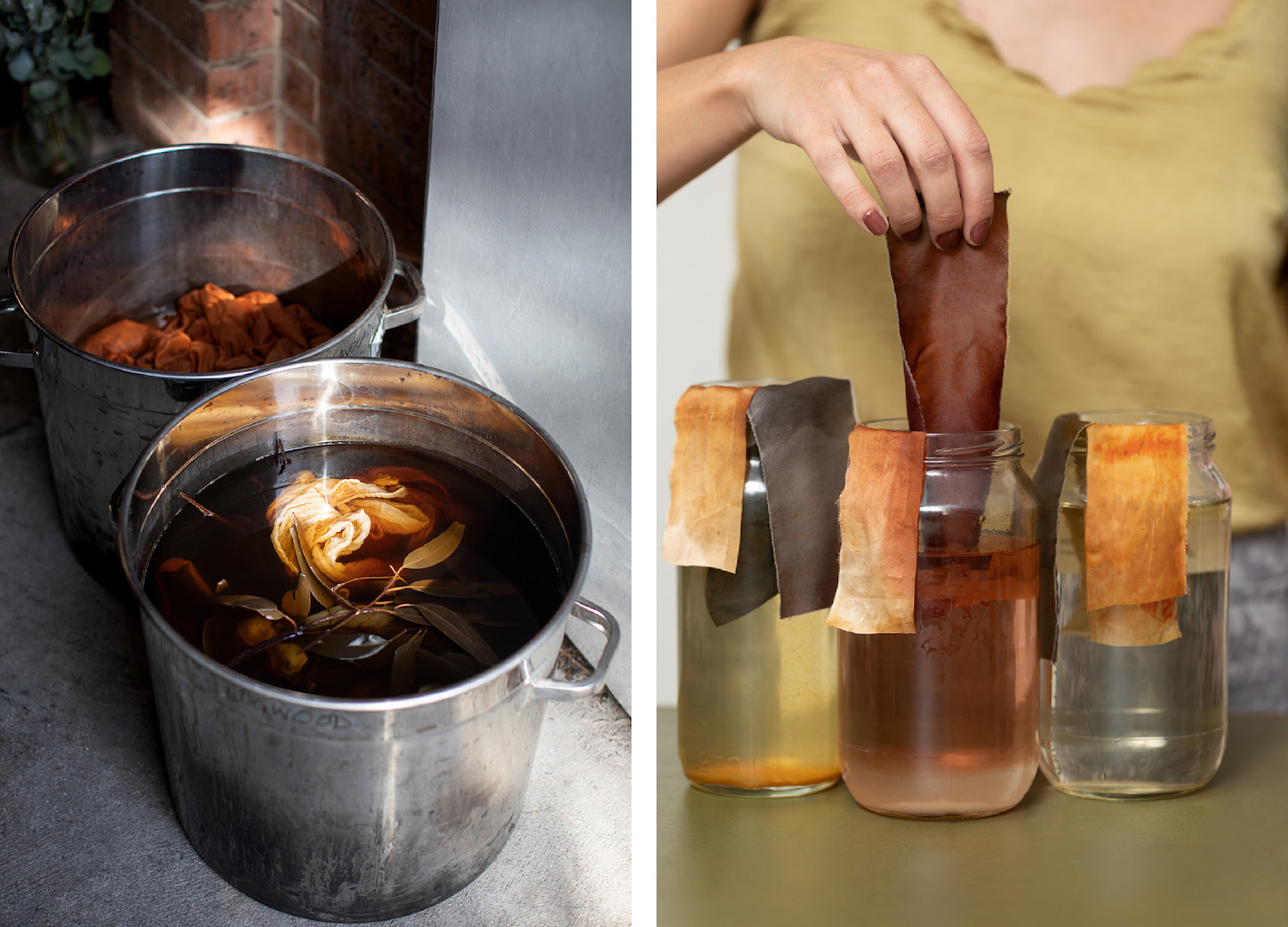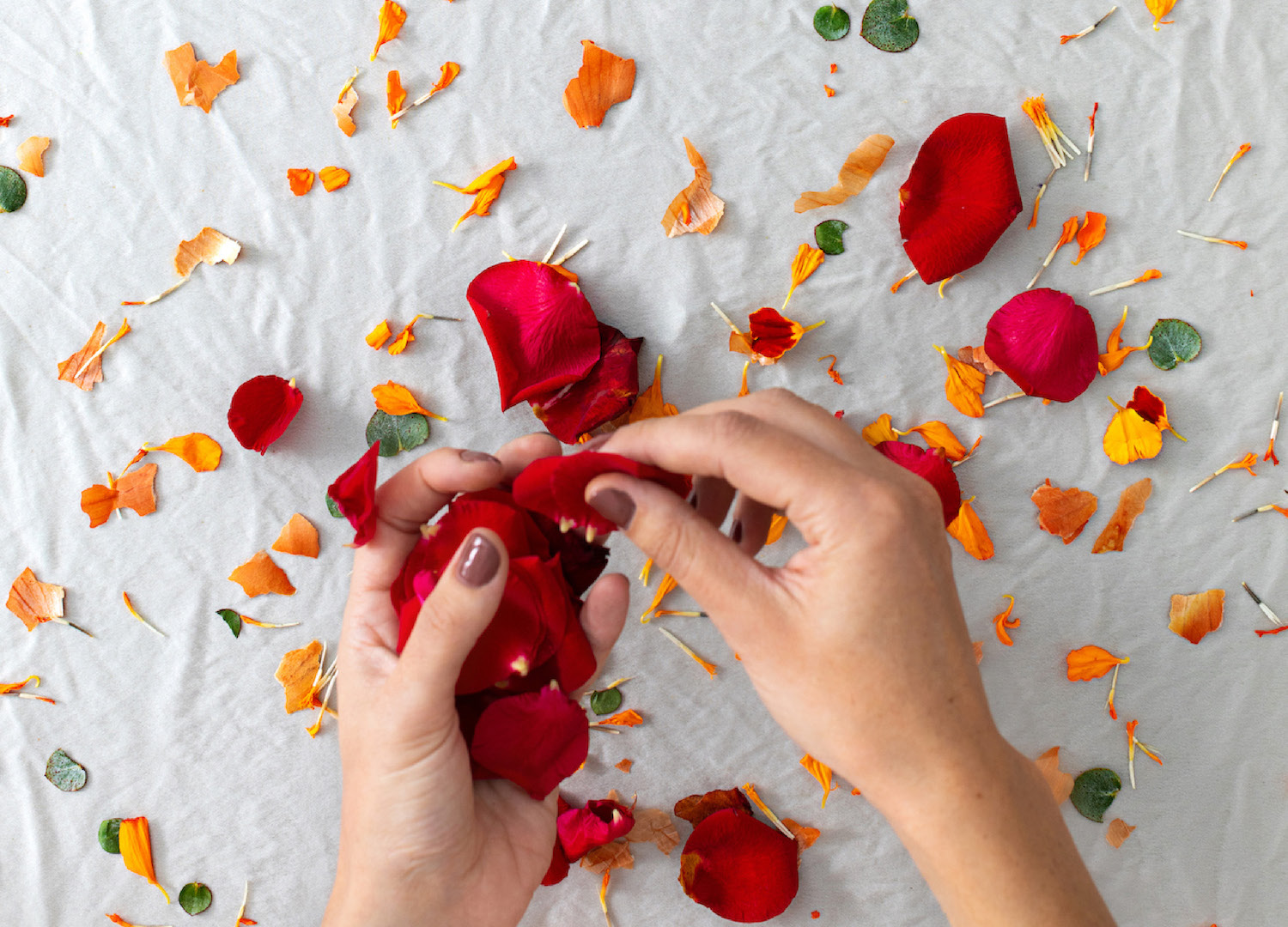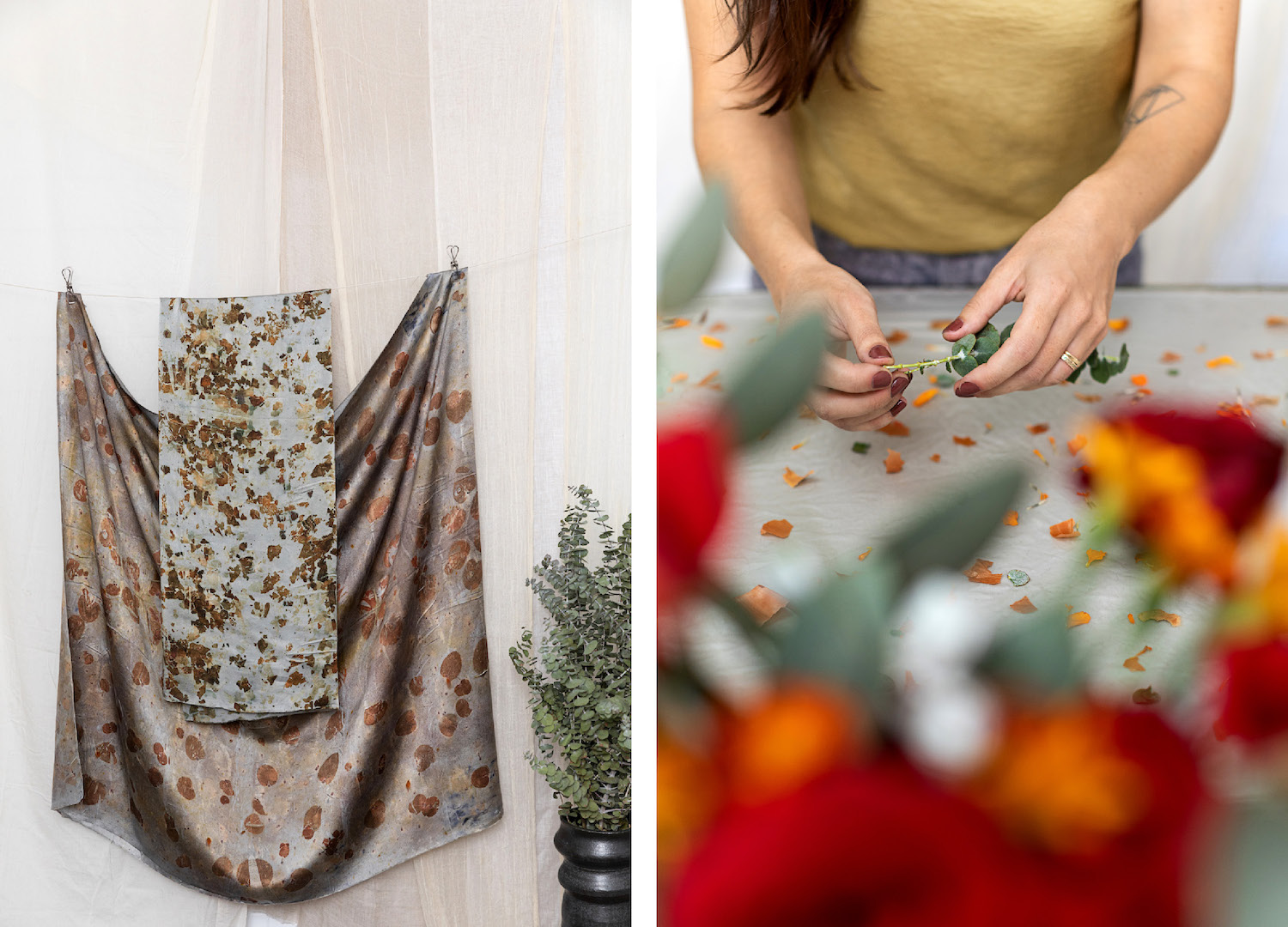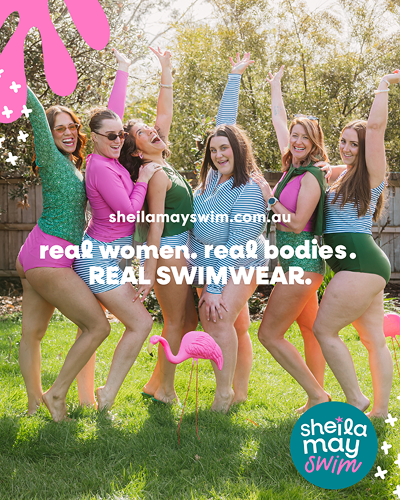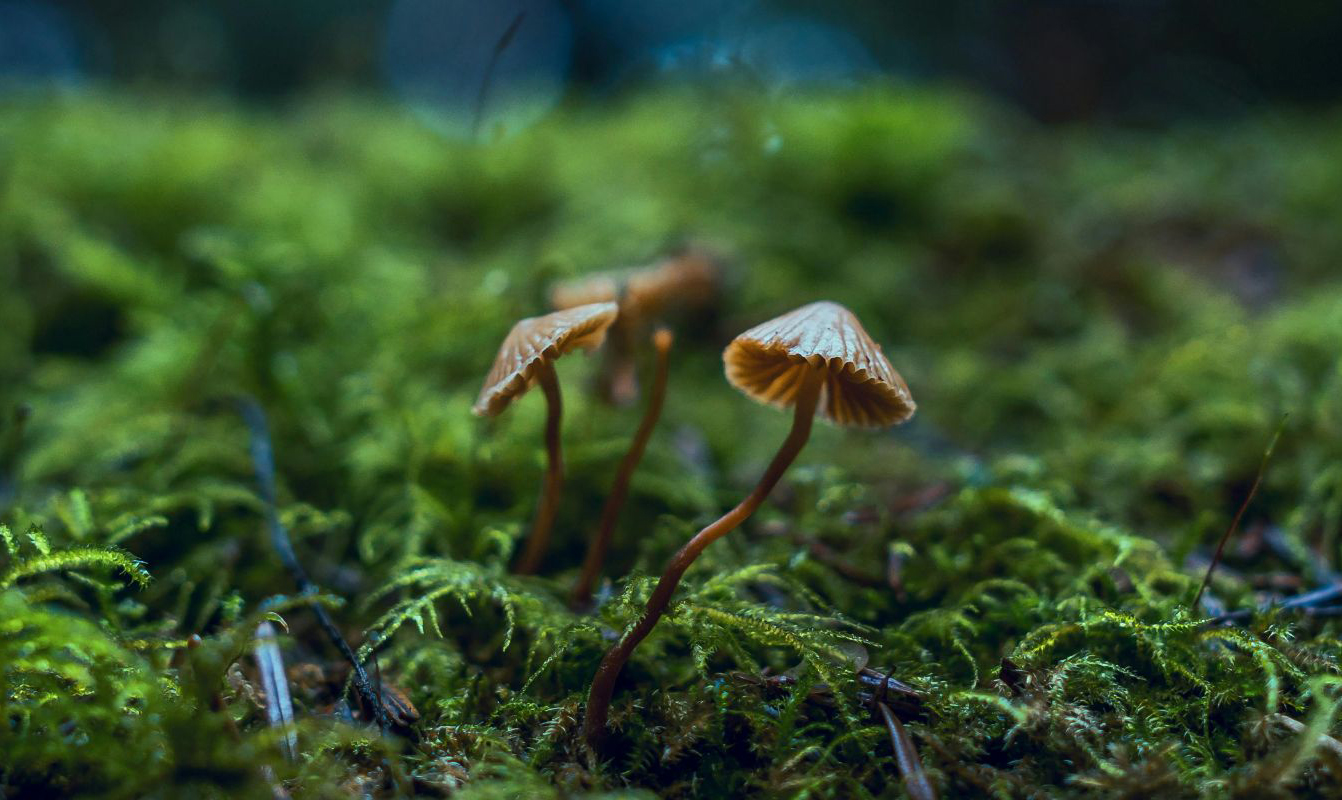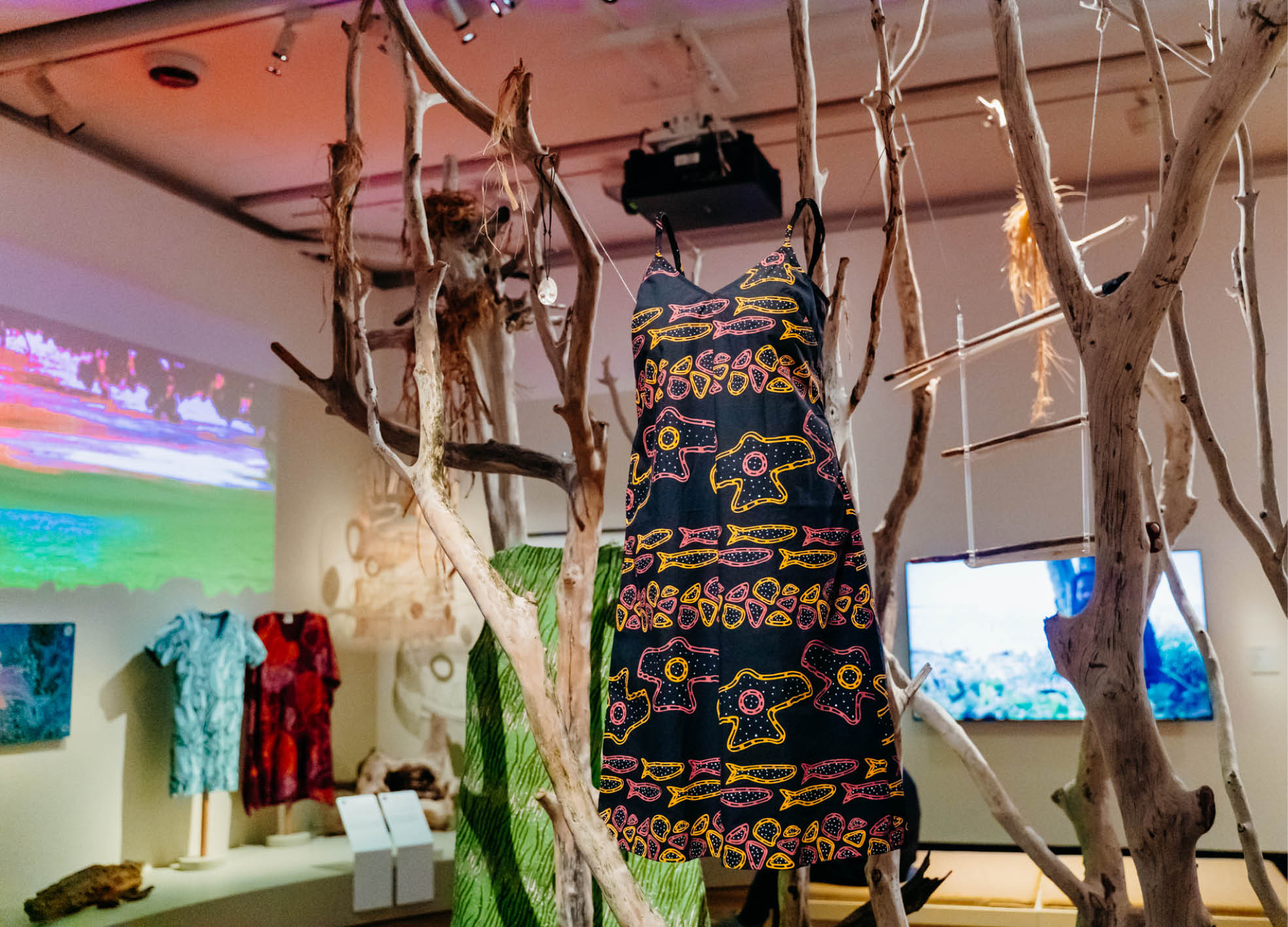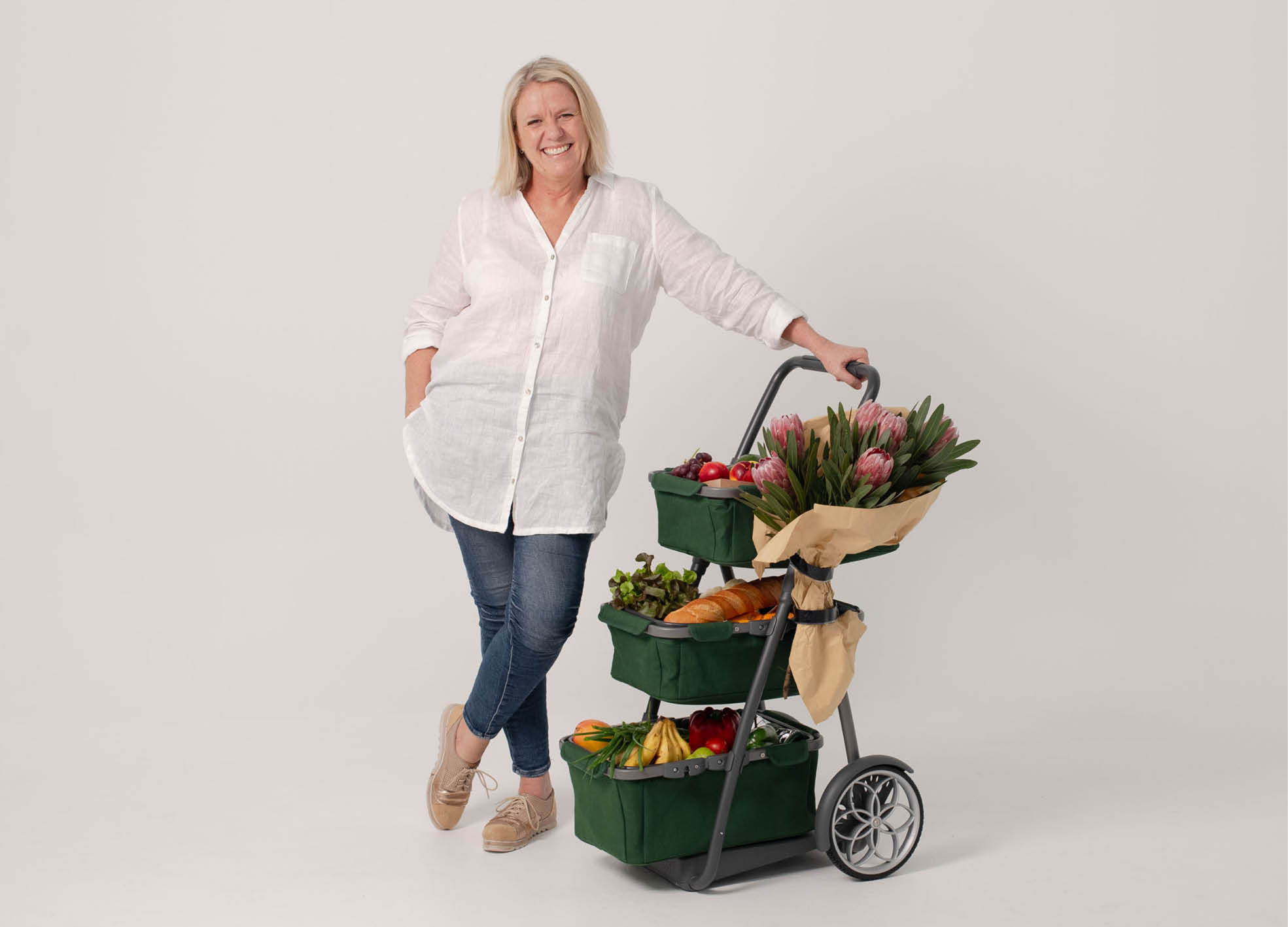Natural Dyeing Tips for Beginners: Everything You Need to Know to Get Started
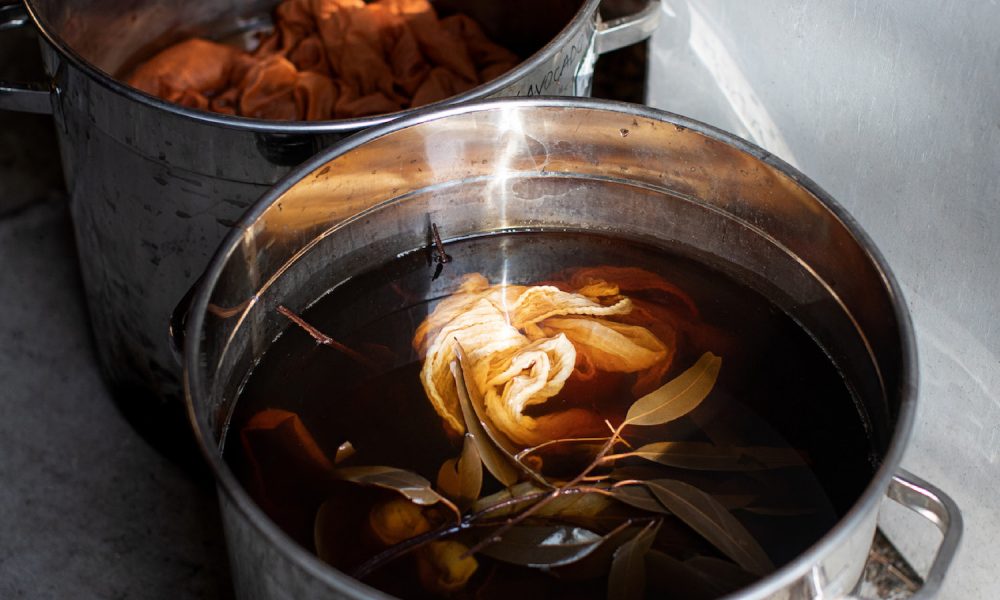
- Words by Peppermint
Part experiment, part craft activity, the magical process of natural dyeing is a fun way to freshen up old wardrobe faves and reconnect with nature in the process. The brainchild of Katie Wilkins, Studio Tinta is a natural dye studio creating sustainable textiles using botanical dyes and natural fibres. With a range of made-to-order silk pillowcases, eye masks and scrunchies, each Studio Tinta piece is manufactured in Melbourne then hand-dyed in Newcastle in a zero-waste process with compostable packing!
Drawing colours from natural materials, Katie is now on a mission to make the creative process of natural dyeing accessible to everyone. Her latest venture is an online Natural Dye School, teaching participants how to make vibrant dyes from her extensive recipe collection before applying them to fabric to create unique, multi-coloured patterns. Enrolments for the course are open now so why not sign up today for fun winter projects galore!
Before you get started though, Katie has provided us with a nifty beginner’s guide to natural dyeing so you can live to dye another day.

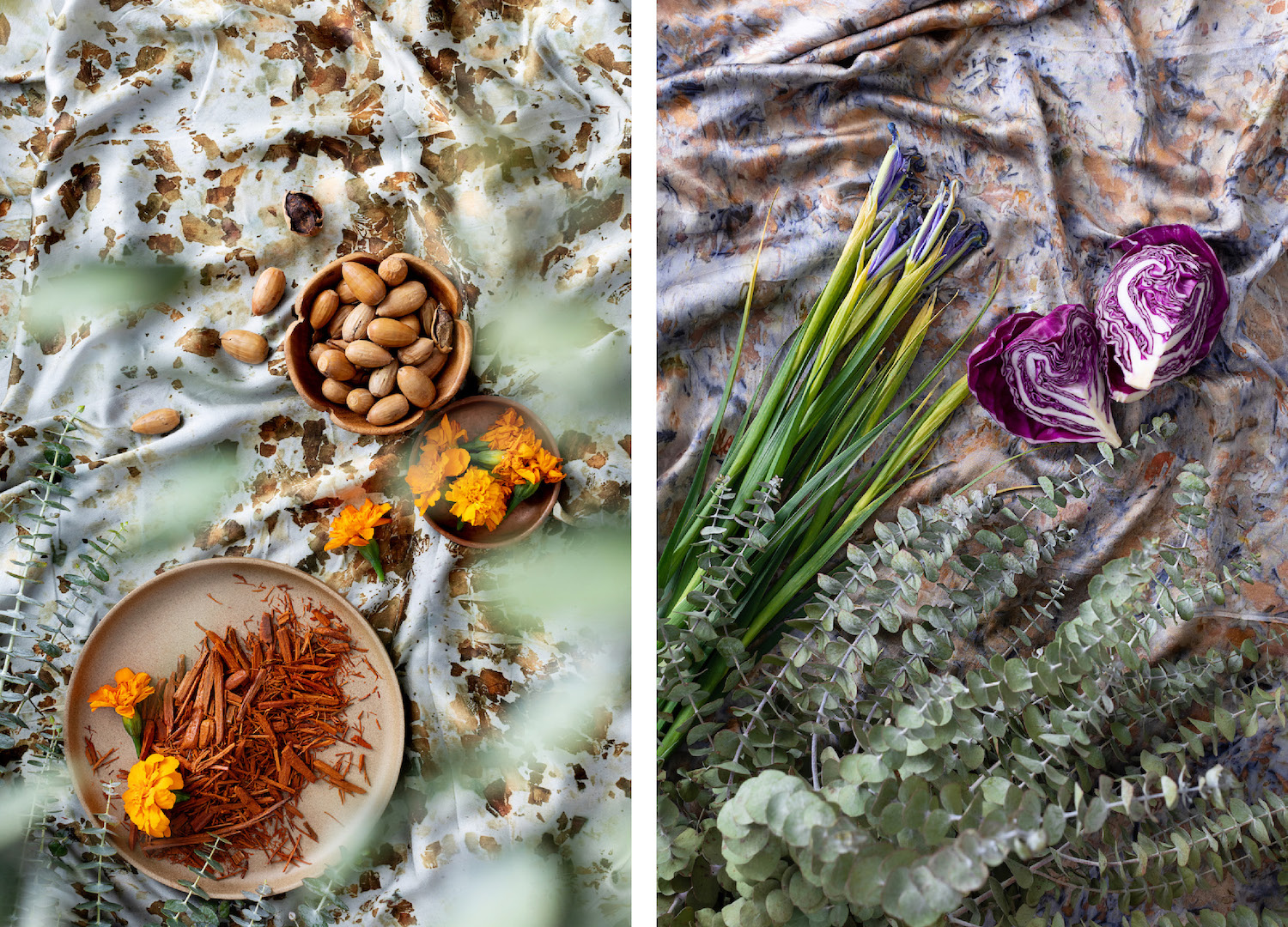
INTRODUCTION
Natural dyeing is not only fun (and addictive!), but it’s an amazing way to breathe new life into your old textiles. Rather than throwing out your stained white tees or your old sheets, you can make them new again using plants you can find in your own environment. Each colour and pattern is completely unique, and you’ll end up with creations you’ll treasure for years to come. It’s a sustainable and affordable way to update your home and wardrobe.
This guide is designed as an introduction give you an overview of how natural dyes work and how you can make them at home from things you find in your pantry, scraps from your kitchen and plants in your garden. I hope this is the start of lots of fun experiments with natural colour.

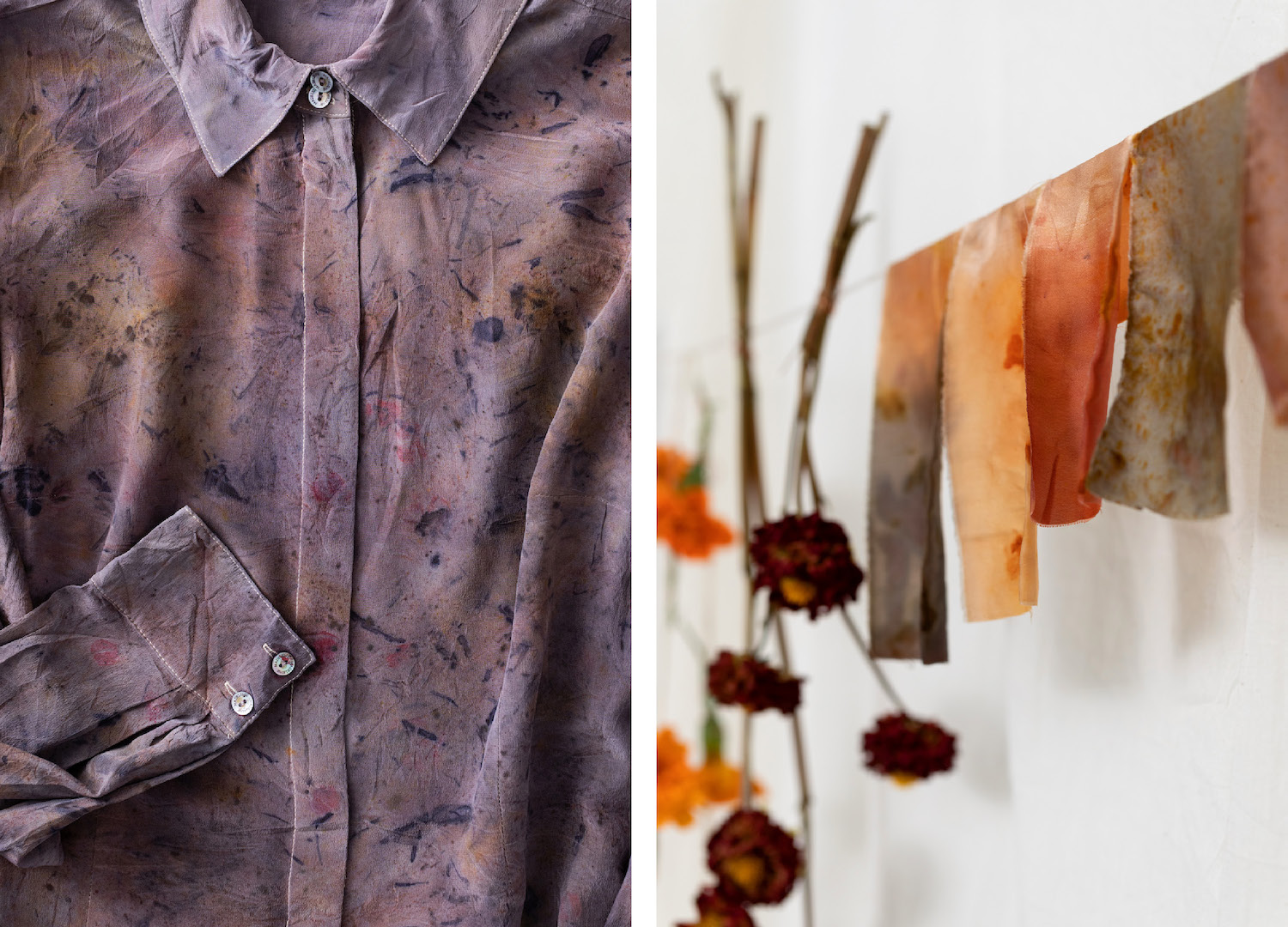
EQUIPMENT
There are a few essential items needed to start dyeing at home. For safety reasons, you shouldn’t use your cooking pots for dyeing unless you are only using edible dye plants. You can find perfect dyeing equipment at your local secondhand store.
– Stainless steel pot
– Stainless steel tongs
– Stainless steel strainer
– Plastic bucket or tub
– Rubber gloves
– Stainless steel/wooden pegs
FIBRES
CELLULOSE FIBRES
Cellulose fibres, or plant fibres, are made from plants. These include fabrics like cotton, linen, hemp and bamboo. These fabrics are the most appropriate for vegans, as synthetic fibres aren’t recommended for natural dyes.
ANIMAL FIBRES
Animal fibres, or protein fibres, have different molecular structures to fibres made from plants. These most commonly include silk and wool. These fibres have a natural affinity for natural dyes and are great for beginners.
MORDANTS
The word mordant comes from the French verb ‘mordre’, meaning ‘to bite’. In other words, a mordant is a substance used to help the dye ‘bite’ or bind to the fibre. A mordant helps you achieve colours that are brighter, deeper and more colourfast. The most common mordants include metal salts such as aluminium or iron, or natural mordants made from plants high in tannin, such as oak galls, or oxalic acid such as rhubarb leaves.
Mordants you can purchase:
– Aluminium acetate
– Aluminium sulphate
– Ferrous Sulphate
– Tannin
Mordants you can make at home:
– Iron water using rusty objects
– Soy milk binder
– Mordant from rhubarb leaves
– Mordant from dyes high in tannin
To learn more, sign up to hear more about the online Natural Dye School and you’ll receive the free Natural Dyeing For Beginners e-book! Thanks to the lovely team at Studio Tinta, we’re also stoked to be able to offer our gorgeous Peppermint community an exclusive discount of 10% off the course price! Sign up today using the code Peppermint10 – valid until 30 June 2021.
photos ZOE LONGERGAN
JOIN OUR MAILING LIST
Brighten up your inbox with our not-too-frequent emails featuring Peppermint-related news, events, competitions and more!
explore
More articles
Look, I don’t want to make anyone panic but IT’S DECEMBER!!! If you’re planning to give homemade gifts, you’re going to have to act fast. I’m a big believer that a DIY gift is the best gift of all, because…
Listen, we need to talk about December. Somewhere between the first appearance of gazillions of Mariah Carey memes prepping us for the imminent arrival of…
When you hang a painting on a wall, the story stays put. But when you wear a beautifully made garment that may as well be…
We all do it: fire up the car for a 5-minute drive to pick up groceries, drop off sewing supplies, or run a quick errand…
Hang out with us on Instagram
Sunday serving suggestion ☀️
Gorgeous photos from @JolieFemmeStore - who make sweet garments from vintage bedsheets.
#PeppermintMagazine #SlowSunday #SwitchOff #Unplug #ReadAMagazine

A toast to the old you 🥂
We wholeheartedly love this post from the brilliant @EmilyOnLife:
“2026: Reinvent, burn it down, let it go (whatever it is). Year of the Snake it up. Exercise your boundaries, exercise your body, take one teeny step every day towards a life that feels better to be in.
But don’t you dare shit on your old self while you do it.
Hold yourself with reverence and tenderness and respect, because you got you this far. You did your very best with the information and tools you had at the time. You scraped yourself together, you made it work, you survived what felt impossible to survive: again and again and again.
You are perpetually in the process of becoming, whether you can feel it or not, whether or not you add it to your 2026 to-do list.“

Some very wise words from @Damon.Gameau to take us into 2026 🙌🏼

⭐️ We made it!!! ⭐️
Happy New Year, friends. To those who smashed their goals and achieved their dreams, and to those who are crawling over the finish line hoping to never speak of this year again (and everyone else in between): we made it. However you got here is enough. Be proud.
It’s been a tough year for many of us in small business, so here’s to a better year in 2026. We’re forever grateful for all your support and are jumping for joy to still be here bringing you creativity, kindness and community.
We’re also excited to be leaping into the NY with our special release sewing pattern – the Waratah Wrap Dress!
How great are our fabulous models: @Melt.Stitches, @KatieMakesADress and @Tricky.Pockets - and also our incredible Sewing Manager @Laura_The_Maker! 🙌🏼
Ok 2026: let’s do this. 💪🏼
#PeppermintWaratahWrapDress #PeppermintPatterns #SewingPattern #MeMade #WrapDress #WrapDressPattern

Putting together our annual Stitch Up brings on all the feels! We feel humbled that you’ve chosen to sew Peppermint patterns, we feel inspired by the versions you’ve created and we feel proud of you.
Where to begin?! As always, there has been a plethora of Peppermint patterns flooding our feeds this year, and we wish we could showcase more than just a handful of magnificent makes from you, our clever community. We encourage you to flip through the me-made items in your wardrobe or scroll through your grid and remind yourself of the beauty you’ve created with your own two hands (and maybe a seam ripper and some choice words). Congratulations to all of us for our creative achievements this year!
We’ve put together some (but absolutely not all) of our favourites from 2025 over on our website. We hope it inspires your next make!
🪡 Link in bio 🪡
Pictured: @FrocksAndFrouFrou @MazzlesMakes @KatieMakesADress @_Marueli_ @IUsedToBeACurtain @Nanalevine.Couture @PiperInFullColour @MadeByMeJessieB @SarahMalkawi @Made.By.Little.Mama
#PeppermintPatterns #SewingPatterns #MeMade #MeMadeEveryday

“The ocean is a great equaliser. It doesn’t matter your age, size, background or circumstances – when you’re in the water, you’re stripped back to your essence. I’ve watched women who were terrified of the ocean walk in tentatively, then emerge with tears of joy and new-found confidence.”
For Perth photographer Amanda Battle, the deep blue has brought sisterhood and second chances. Growing up in Shoalwater Marine Park, the ocean was both her playground and sanctuary, and a balm for body and soul during challenging times. Born from her own healing journey, Amanda’s @WomenOfWaterProject, book and documentary showcases a community of women who found belonging and connection in shared experiences in the ocean.
“Every single woman arrived with her own story – grief, trauma, joy, resilience – and every single woman showed up exactly as they were in that moment. Photographing over 100 women in the ocean for the Women of Water book has been the most humbling privilege of my life.”
Discover Amanda’s work and story in ‘Saltwater salve’ in issue 64, at newsagents and stockists now!
#PeppermintMagazine #WomenOfWater #OceanTherapy #DeepBlue #OceanPhotography

